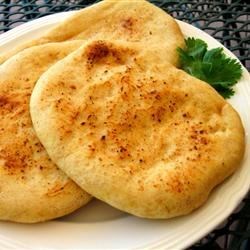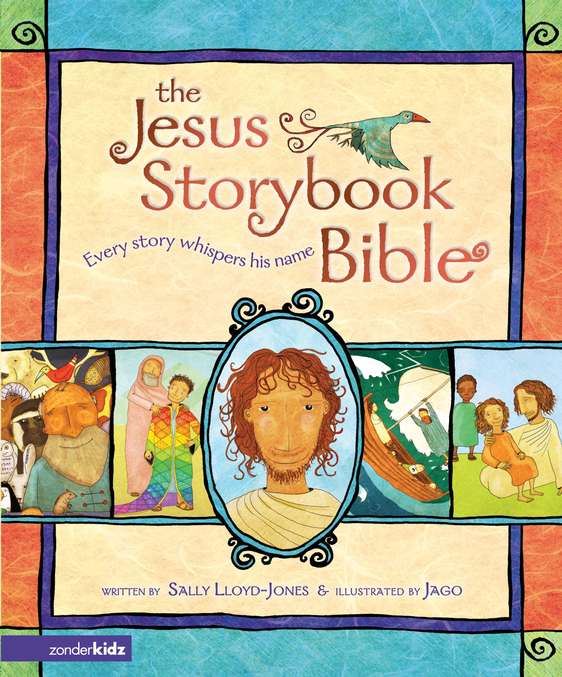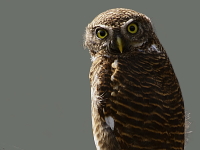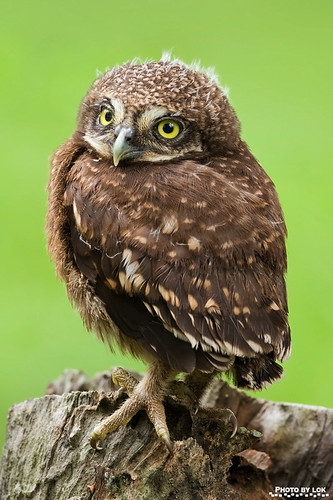Monday, January 31, 2011
Saturday, January 29, 2011
Rainforest in Costa Rica

A boy's Costa Rica Rainforest Experience:
http://kidsblogs.nationalgeographic.com/globalbros/2009/06/costa-rica-stefan.html
The sounds of the rainforest:
Tuesday, January 25, 2011
Oldie But A Goodie
There are days, like today, when everything goes down hill. Everyone has a few parenting tricks up their sleeves to attempt to turn things around. At our house, 'Oldies' are magic. We turn up the music and no one can keep the rhythm from penetrating that happy part of their heart and so, we dance, smile, laugh. It's therapeutic to say the least. Need a little pick me up? Here's one of our family's absolute favorites:
Sunday, January 23, 2011
Plans and Tools
I am so green when it comes to homeschooling. Honestly, I really have no business telling anyone how to do it, but I can share how I am doing it.
Stephen and I have carved out about two hours on Saturdays for me to do my lesson plans. At that time, I draw out every increment of each school day.
Then I use this blog to upload videos, pictures, and resources that correlates with our schedule. The blog is very useful; it allows me to have one central local for me to access the information on demand when we get to that activity during the school day.
In addition, I bookmark the pictures, maps, and resources so that I can print them for the kids to use in their "Index Notebook".
The "Index Notebook" stores their pictures, maps, etc. Not only does it serve as a neat organized storage, it also is used for 'flash cards' that can be a tool to review what we've learned.
Another helpful tool is their 'Journals'. Currently, we are using their journals for handwriting by practicing writing key words of the day's lesson.
That about sums up the skeleton of our homeschooling plans and tools. To me, simple is always good.
Stephen and I have carved out about two hours on Saturdays for me to do my lesson plans. At that time, I draw out every increment of each school day.
In addition, I bookmark the pictures, maps, and resources so that I can print them for the kids to use in their "Index Notebook".
The "Index Notebook" stores their pictures, maps, etc. Not only does it serve as a neat organized storage, it also is used for 'flash cards' that can be a tool to review what we've learned.
Another helpful tool is their 'Journals'. Currently, we are using their journals for handwriting by practicing writing key words of the day's lesson.
That about sums up the skeleton of our homeschooling plans and tools. To me, simple is always good.
Saturday, January 22, 2011
The Tawny Owl
The Asian Barred Owl and the Tawny Owl live in the Himalayan mountains in the northwestern part of India.
Wednesday, January 19, 2011
Personal Testimony
For over five years I have wrestled with the subject of our children's education. After dragging my feet and resisting the idea of taking on the responsibility of homeschooling we have finally decided for the Spring of 2011, our family will undergo one trial semester of homeschooling. We are approaching this semester with the attitude of 'laying a foundation' and I am refusing to give-in to the tendency to make drastic changes. Instead, we have chosen to be fully committed by taking the first baby steps and wading into the pool of schooling at home, but not diving in full force (which I was inclined to do). Basically our formal/planned schooling consists of two days a week from 8:30 to 3:30 which includes breaks through out.
An Average School Day:
7 Wake Up, Morning Milk/Short Video, Get Dressed, Breakfast
8:15 Play with Fisher (give him extra attention before starting class)
8:30 Circle Time (Play games, stretch, exercise)
8:45 Math Class (Tues); Science Class (Thurs) Anya (3 year old) is excused ~15 minutes before Easton (5 years old) so she can play with Fisher (1 year old) while I spend one on one time with Easton.
9:30 Snack Time
10:00 History Class
11:00 Break, Lunch, Play
1:00 Fisher (1 year old) naps; Easton has Quiet Time; Anya does English Class
1:45ish Anya has Quiet Time
2:45ish Easton has English Class
3:30 School Day Ends
Right now we are doing what I believe is called a 'Unit Study'. We are structuring our subjects around one central theme. I am using the book Window On The World to plan subjects. Each page of the book informs the reader about a particular nation in the world. For instance, our first nation is India, so I am teaching the kids about Mother Teresa, Asian Barred Owlets, Indian Food, Hindi Language, etc by weaving India into Math, Science, History, English, and Spiritual Growth.
Fortunately, I have enjoyed learning along with the kids which definitely puts a positive spin on things. In addition, I have seen an overall improvement in the household climate. I am grateful for the peace that comes with surrendering to God's directions. I am not sure what the future holds concerning our family's educational choices, but I am confident that if I obey God on a day to day basis that He will lead me and my family down the right path whether we continue homeschooling or not.
What are your fears, questions, concerns about homeschooling? Do you feel pressured to provide an education for your children a certain way? Do you think there is a right or wrong way?
An Average School Day:
7 Wake Up, Morning Milk/Short Video, Get Dressed, Breakfast
8:15 Play with Fisher (give him extra attention before starting class)
8:30 Circle Time (Play games, stretch, exercise)
8:45 Math Class (Tues); Science Class (Thurs) Anya (3 year old) is excused ~15 minutes before Easton (5 years old) so she can play with Fisher (1 year old) while I spend one on one time with Easton.
9:30 Snack Time
10:00 History Class
11:00 Break, Lunch, Play
1:00 Fisher (1 year old) naps; Easton has Quiet Time; Anya does English Class
1:45ish Anya has Quiet Time
2:45ish Easton has English Class
3:30 School Day Ends
Right now we are doing what I believe is called a 'Unit Study'. We are structuring our subjects around one central theme. I am using the book Window On The World to plan subjects. Each page of the book informs the reader about a particular nation in the world. For instance, our first nation is India, so I am teaching the kids about Mother Teresa, Asian Barred Owlets, Indian Food, Hindi Language, etc by weaving India into Math, Science, History, English, and Spiritual Growth.
Fortunately, I have enjoyed learning along with the kids which definitely puts a positive spin on things. In addition, I have seen an overall improvement in the household climate. I am grateful for the peace that comes with surrendering to God's directions. I am not sure what the future holds concerning our family's educational choices, but I am confident that if I obey God on a day to day basis that He will lead me and my family down the right path whether we continue homeschooling or not.
What are your fears, questions, concerns about homeschooling? Do you feel pressured to provide an education for your children a certain way? Do you think there is a right or wrong way?
Saturday, January 15, 2011
Asian Indian Food
The staples of Indian cuisine are rice, atta (whole wheat flour), and a variety of pulses, the most important of which are masoor (most often red lentil), channa (bengal gram), toor (pigeon pea or yellow gram), urad (black gram), and mung (green gram). Pulses may be used whole, dehusked – for example, dhuli moong or dhuli urad – or split. Split pulses, or dal, are used extensively. Some pulses, like channa and mung, are also processed into flour (besan).
Most Indian curries are cooked in vegetable oil. In northern and western India, peanut oil is most popular for cooking, while in eastern India, mustard oil is more commonly used. Coconut oil is used widely along the western coast especially in Kerala; gingelly (sesame) oil is common in the south as well. In recent decades, sunflower oil and soybean oil have gained popularity all over India. Hydrogenated vegetable oil, known as Vanaspati ghee, is another popular cooking medium. Butter-based ghee, or desi ghee, is less used than formerly.
The most important or frequently used spices in Indian cuisine are chilli pepper, black mustard seed (rai), cumin (jeera), turmeric (haldi, manjal), fenugreek (methi), asafoetida (hing, perungayam), ginger (adrak, inji), coriander (dhania), and garlic (lehsun, poondu). Popular spice mixes are garam masala, a powder that typically includes five or more dried spices, especially cardamom, cinnamon, and clove. Each region, and sometimes each individual chef, has a distinctive blend of garam masala. Goda masala is a similar sweet spice mix, popular in Maharashtra. Some leaves are commonly used, including tejpat (Bay leaf), coriander leaf, fenugreek leaf, and mint leaf. The common use of curry leaves and curry roots is typical of all South Indian cuisine. Sweet dishes are seasoned with cardamom, saffron, nutmeg, and rose petal essences.
(excerpt from Wikipedia)
Indian Naan (Authentic Asian Indian Flatbread)

Most Indian curries are cooked in vegetable oil. In northern and western India, peanut oil is most popular for cooking, while in eastern India, mustard oil is more commonly used. Coconut oil is used widely along the western coast especially in Kerala; gingelly (sesame) oil is common in the south as well. In recent decades, sunflower oil and soybean oil have gained popularity all over India. Hydrogenated vegetable oil, known as Vanaspati ghee, is another popular cooking medium. Butter-based ghee, or desi ghee, is less used than formerly.
The most important or frequently used spices in Indian cuisine are chilli pepper, black mustard seed (rai), cumin (jeera), turmeric (haldi, manjal), fenugreek (methi), asafoetida (hing, perungayam), ginger (adrak, inji), coriander (dhania), and garlic (lehsun, poondu). Popular spice mixes are garam masala, a powder that typically includes five or more dried spices, especially cardamom, cinnamon, and clove. Each region, and sometimes each individual chef, has a distinctive blend of garam masala. Goda masala is a similar sweet spice mix, popular in Maharashtra. Some leaves are commonly used, including tejpat (Bay leaf), coriander leaf, fenugreek leaf, and mint leaf. The common use of curry leaves and curry roots is typical of all South Indian cuisine. Sweet dishes are seasoned with cardamom, saffron, nutmeg, and rose petal essences.
(excerpt from Wikipedia)
Indian Naan (Authentic Asian Indian Flatbread)

Ingredients
- 2/3 cup warm water (110 degrees F/45 degrees C)
- 1 teaspoon active dry yeast
- 1 teaspoon white sugar
- 2 cups all-purpose flour
- 1 teaspoon salt
- 1/4 cup ghee
- 2 tablespoons plain yogurt
- 2 teaspoons kalonji (onion seed)
Directions
- Whisk the warm water with the yeast and sugar until the yeast is dissolved. Cover and let stand in a warm place for 10 minutes.
- Sift flour and salt three times into a large bowl add the yeast mixture, half of the ghee and all the yogurt. Mix into a soft dough then knead on a floured surface for about 5 minutes or until dough is smooth and elastic. Place the dough in a large greased bowl, cover and let stand in a warm place for 1 1/2 hours or until the dough is doubled in size .
- Punch down dough then knead for 5 minutes. Divide dough into 6 pieces. Roll each piece out into 8 inch round naans.
- Cover an oven tray with foil and grease the foil. Brush the naan with a little of the remaining ghee and sprinkle with some of the kalonji. Cook naan one at a time under a very hot grill for about 2 minutes on each side or until puffed and just browned.
Game List: Interactive Play
- Big Bad Wolf: Colored Eggs
- Animal Charades
- Mother May I?
- 20 Questions
- Duck, Duck, Goose
- Simon Says
- Camping Trip
- Doggy Doggy Where's Your Bone?
Tuesday, January 11, 2011
So far...
...so good.
Today is our official first day of trial homeschooling. Really, I'd say it's been a success. I am so thankful that I have a peace. It has assured me through out the morning that we are doing what we are supposed to be doing.
My homeschooling-mother-friend gave me a word of advice two days ago. Interestingly, the subject had, in fact, been on my mind. "How do you manage the younger children while teaching the older ones?" My friend told me that she has learned that investing ten to fifteen minutes with the little ones at the very beginning of the day helps fill them up with attention and love, so that it eases the weight of your divided attention the rest of the day.
That advice was very helpful and I did hone in on our one year old in order to make sure I was extra sensitive to his needs. As unfair as it may be, if he is not happy, we all tend to suffer. It turned out that balancing school with the older ones and attempting to entertain a toddler was the most challenging aspect to our day.
Overall, I am pleased and look forward in anticipation.
Today is our official first day of trial homeschooling. Really, I'd say it's been a success. I am so thankful that I have a peace. It has assured me through out the morning that we are doing what we are supposed to be doing.
My homeschooling-mother-friend gave me a word of advice two days ago. Interestingly, the subject had, in fact, been on my mind. "How do you manage the younger children while teaching the older ones?" My friend told me that she has learned that investing ten to fifteen minutes with the little ones at the very beginning of the day helps fill them up with attention and love, so that it eases the weight of your divided attention the rest of the day.
That advice was very helpful and I did hone in on our one year old in order to make sure I was extra sensitive to his needs. As unfair as it may be, if he is not happy, we all tend to suffer. It turned out that balancing school with the older ones and attempting to entertain a toddler was the most challenging aspect to our day.
Overall, I am pleased and look forward in anticipation.
Sunday, January 9, 2011
Highly Recommend!
If you have children in your life, want to have children in your life, or even need a fresh child-like perspective in your life on the Bible, I implore you to own this Bible!
An absolute must have!
For more information on purchasing this book, visit this link.

An absolute must have!
For more information on purchasing this book, visit this link.

Our Unit Study
For our trial semester of homeschooling Spring 2011, we are using this book:

So far, I really love it! I am sure I will refer to this book often so I thought I would share the informational link with those of you who are looking for ideas that educate children while simultaneously incorporating a biblical worldview.

So far, I really love it! I am sure I will refer to this book often so I thought I would share the informational link with those of you who are looking for ideas that educate children while simultaneously incorporating a biblical worldview.
Saturday, January 8, 2011
Mother Teresa
"...Of free choice, my God, and out of love for you, I desire to remain and do whatever be your Holy will in my regard." --Mother TeresaOn 10 September 1946, Teresa experienced what she later described as "the call within the call" while traveling by train to the Loreto convent in Darjeeling from Calcutta for her annual retreat. "I was to leave the convent and help the poor while living among them. It was an order. To fail would have been to break the faith."
In 1952 Mother Teresa opened the first Home for the Dying in space made available by the city of Calcutta. With the help of Indian officials she converted an abandoned Hindu temple into the Kalighat Home for the Dying, a free hospice for the poor. She renamed it Kalighat, the Home of the Pure Heart (Nirmal Hriday).[33] Those brought to the home received medical attention and were afforded the opportunity to die with dignity, according to the rituals of their faith; Muslims were read the Quran, Hindus received water from the Ganges, and Catholics received the Last Rites.[34] "A beautiful death," she said, "is for people who lived like animals to die like angels—loved and wanted.
Mother Teresa soon opened a home for those suffering from Hansen's disease, commonly known as leprosy, and called the hospice Shanti Nagar (City of Peace).[35] The Missionaries of Charity also established several leprosy outreach clinics throughout Calcutta, providing medication, bandages and food.
Naaman's servants went to him and said, "My father, if the prophet had told you to do some great thing, would you not have done it? How much more, then, when he tells you, 'Wash and be cleansed'!" So he went down and dipped himself in the Jordan seven times, as the man of God had told him, and his flesh was restored and became clean like that of a young boy. Then Naaman and all his attendants went back to the man of God. He stood before him and said, "Now I know that there is no God in all the world except in Israel. Please accept now a gift from your servant. The prophet answered, "As surely as the Lord lives, whom I serve, I will not accept a thing." And even though Naaman urged him, he refused. - {2 Kings 5:16 NIV}
Asian Barred Owlet
Creatures of the Night
Some of the most remarkable animals are those that rarely or never see the light of day. These animals are nocturnal; they rest during the day and are awake at night. Over millions of years, these animals have developed traits that help them survive in the darkness.
Day and Night
One day is the 24-hour period during which the Earth rotates on its axis. An acceptable definition for young children is that a day is the period from sunrise to sunset, a time when we have light. The night is the period of darkness between sunset and sunrise. Seeing the sun during the day and the moon and stars at night is another way to discuss day and night. Listing activities we complete during the day and activities we complete at night is another way to compare and contrast day and night.
Shadows
Anytime there is light, there can be shadows. A shadow is formed when something blocks light. Night is a shadow. The sun is shining on one side of the earth, the other side is in shadow or darkness. At night we see shadows created by such things as car lights, porch lights, street lights.
Nocturnal Animals
After you go to bed at night many different kinds of animals are just waking up. These are the nocturnal animals, animals that sleep during the day and are active at night. These animals like the dark because they can hide better from their enemies, it is not as hot during the night, and it is easier to find food. These animals have many adaptations that allow them to be active at night. They may have larger ears to hear better, bigger eyes to see better, and body parts that glow in the night.
"Owls are a common nocturnal bird. Their nocturnal activities include hunting, finding and defending a territory, and communicating with a mate. Most owls prefer a habitat of old woods near open fields, but they have been found living in or near farms and urban areas. Many owls are cavity dwellers, building their nests in the holes of dead trees. Owls feed mainly on small mammals (rabbits, mice, squirrels, and chipmunks) but may also eat snakes, insects, birds, and frogs. Owls swallow their food whole: bones, fur, feathers, it all goes down to their stomachs. Since owls can’t digest bones and fur, the stomach pushes all of the indigestible material into a ball. The owl regurgitates this ball referred to as an owl pellet. Owl pellets may be dissected and the bones removed. Owl pellets have been studied extensively as they are an excellent indicator as to what the owl has been eating.
Owls have many adaptations for silently hunting at night.
Owls are one of the quietest of the nighttime predators.
Owls have large eyes and excellent eyesight for hunting.
 Owls can turn their head 180 degrees in each direction. An owl can turn its head quickly, looking as though the head turned all the way around.
Owls can turn their head 180 degrees in each direction. An owl can turn its head quickly, looking as though the head turned all the way around. Owls also possess fringed feathers at the end of their wings. This allows for silent flight because their feathers muffle the air being pushed over the wing.
Owls rest during the day in the protection of branches with leaves, holes in trees or in buildings.
Owls have brown, black, and tan colors that help camouflage them in the trees."--
From Nature Boxes for Early Childhood Educators, Debbi Williams, Story County Conservation Board, http://kindernature.storycounty.com/display.aspx?DocID=20053151353
Subscribe to:
Comments (Atom)

















